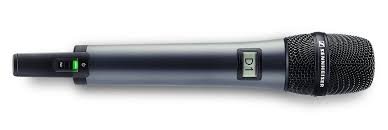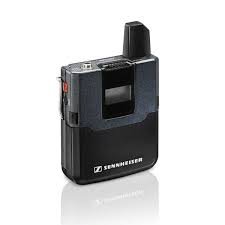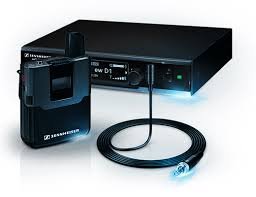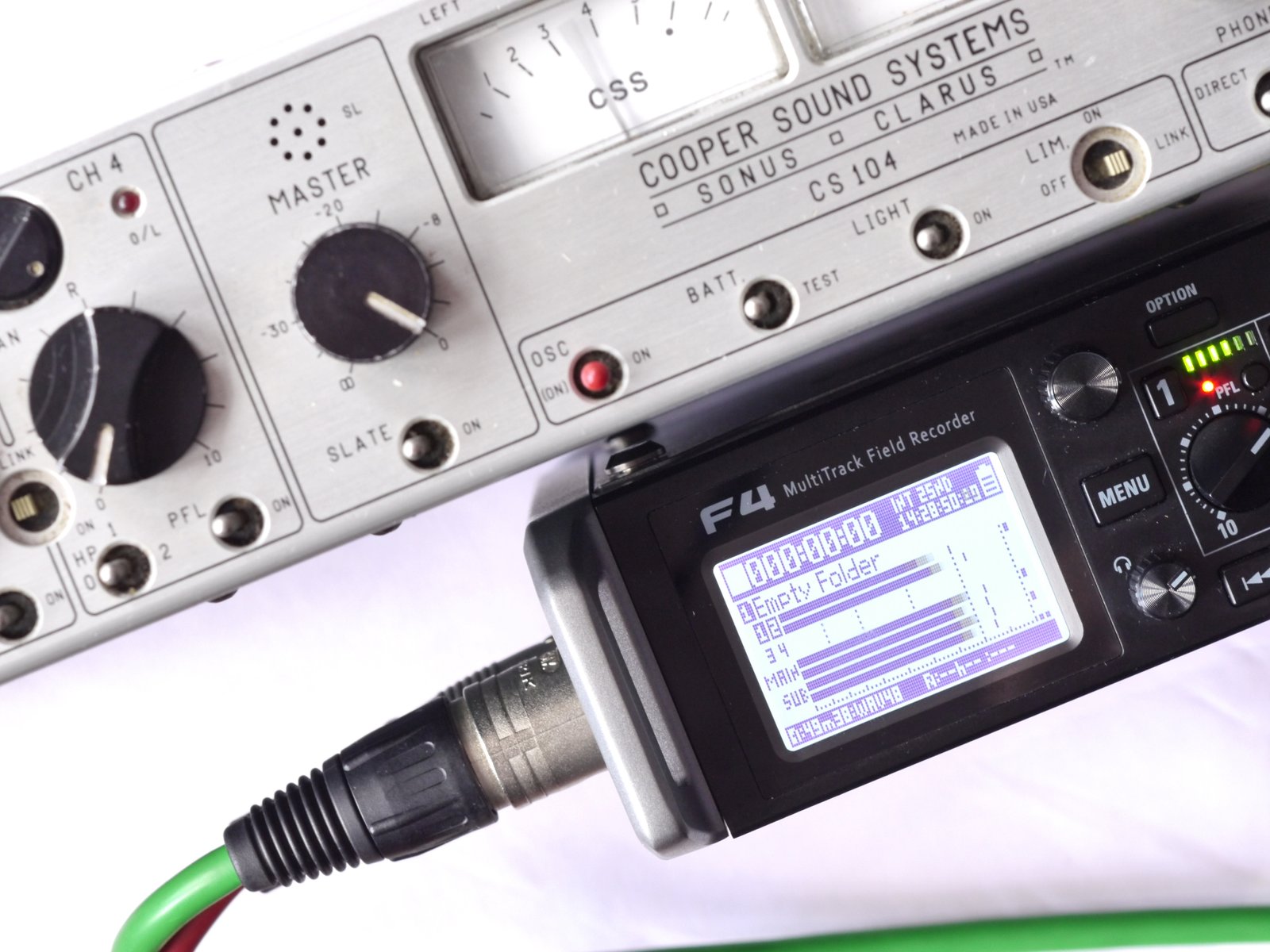A few weeks ago I was looking forward to a new wave of 2.4 gig radio gear from well established manufacturers that won’t need a licence and won’t break the bank. The first to arrive was courtesy of Sennheiser.
It was only after unpacking the new Sennheiser Evolution Wireless D1 digital radio mics that I realised how much Sennheiser radio kit I had. Two vhf diversity kits with mains powered receivers, three vhf location kits inherited – thanks Tel – an Evolution G2 personal system and an ew 500 plugon, oh and a 300 iem transmitter. I guess all that is testimony to the success (and longevity) of Sennheisers radio product.

So a new departure from Sennheiser in the world of wireless is always going to raise a lot of interest. And when that product carries the Evolution label it has a lot to live up to. There have always been cheaper alternatives to Evolution kit but I’ve never found any that were compelling purchases. Of course if you have more money, Sennheiser have more expensive options and there are new higher end digital offerings to come. However today we’re concerned with the Evolution D1 radio mics operating licence free in the 2.4 GHz band.
Out of the box the finish is very good and all the gear (I had a handheld and a beltpack system) felt good in the hand. The mains powered receivers are not housed in quite the bulletproof sleeves of the old G series I have but are nonetheless well finished and offer some significant technological advances.
First, 2.4GHz is licence free. Hooray I hear you cry and hooray indeed. There is a word of caution of course, 2.4GHz is home to the WiFi party and the Blue Tooth bonanza so it’s a busy old bit of spectrum. In the same way that licence free channel 70 is busy. And you accept working in these areas that you need to be a bit careful. Don’t sit your ewD1 receiver on top of your wireless router – that is a bad idea. In fact keep your D1 receivers at least five meters from your WiFi transmitters. On the other hand I tried out the ewD1 on gigs in suburban houses of worship – pretty much bang on the target market – and despite the plethora of networks flying round I had no problems at all. The digital Evolution tech involves time and frequency diversity and redundancy to protect against burst disruption. Sennheiser advise that under ideal conditions you can run 15 systems, I reckon your ahead of the game at anything over seven, more than you can run licence free without intermod in channel 70.

Second, no tuning. Yes, tuning is a thing of the past, pairing is the new tuning. All parts of the system hav a ‘Pair’ button. A long press on Pair at the tx end brings up ‘Press Pair on Rx’ and indeed a long press on Pair at the receiver links you up. Once a pairing is established a short press on the pair button at either end flashes the leds or both rx and tx to show you which channel is which. Nice touch.
The hand held and the lavalier have small squinty screens – I guess there’s no need now to show frequencies and other tuning info. However the small screen will show the name of the receiver the mic is paired with. On the receiver you get a lovely OLED screen which will even display QR codes linking you to the Sennheiser help site! The screen is in fact double width, containing lots of info. In order of love – tx battery, RF signal, AF signal, audio out level, low cut filter, digital processing and it even identify the model of Sennheiser mic you you are connected to. Luxury.
The Sk-D1 body pack is a beauty, really nice ‘made in Germany’ finish with the battery sled which has come down from the higher range, in which both AA batteries fit in the same direction. What an idea – other manufacturers hang your heads in ‘did I fit the batteries the right way round?’ shame. I should say the hand held also has a brilliant battery sled. While on the subject of power, Sennheiser offer a Li-On Accupac that will enable ‘time remaining’ on the receiver display. I stuck a couple of well used Sanyo Enerloop 2450 mAh rechargeables in the hand held and got about eight hours. Very nice.
The mic input on the SK-D1 is a locking 3.5mm jack and the supplied mic is the decent enough, ME 2-2. Sadly my Sanken Cos 11 is wired for Micron and my AKGs to xlr, shame it would have been nice to try a mic upgrade. One thing that will strike you straight away is the stubby little aerial – higher frequency = shorter waves = shorter aerial. Which is great, but there is a price to pay. Shorter waves = more directional and less bendyness round corners. More to the point due to EU restrictions the 2.4GHz system is restricted to 10mW and therefore range is lower than its UHF brethren. I tested the D1 against my older Evo kit and the analogue does indeed best the D1 for range. Sennheiser quote 60 odd meters for D1 against 100 meters for the G3, best case and line of sight.
Both the body pack and the hand held (SKM-S D1) have easily accessible mute switches (there is a hand held version the SKM D1 without). Personally I am against mute switches, it’s a history thing. However, great was my rejoicing when I found I could disable the mute switch at the receiver, in fact I could disable the mute switch while it was muted, at the receiver. No more tears of frustration as your talent takes the stage having helpfully muted the mic but forgotten to unmute it.
And having mentioned DSP we should say that the receiver has a whole range of EQ options, twelve presets and a custom setting which offers control of seven frequencies from 50Hz to 10k. Normally I wouldn’t worry about eq on the radio mic receiver but if you were running the system straight into a recorder and then handing over rushes without a chance to process them – well eq would be just the thing you need. There’s also a de-esser and AGC should you require them.
Round the back of the receiver in addition to the standard (for Sennheiser) xlr and jack outputs you also get a network port. Which allows firmware updating and wireless control of the receiver. There’s an app for that, well there will be soon, Sennheiser say June. Of course you want to be careful with the amount of 2.4GHz you are chucking around – set your network to 5GHz or remember the 5m rule! The great thing about wireless control is it helps overcome the reduced range of 2.4GHz systems like the D1, when you might have to site the receivers nearer your talent than you would otherwise. I’m hoping for a windows or OSX version because I want wired control of my wireless!
Which brings me to one other short coming of digital wireless, latency. The ewD system has about 4ms of latency. Which is not a problem for performers but will be a problem if you want to combine analogue and digital mics on the same stage. Of course many people will be mixing on digital desks which have delay available on every channel – but if you aren’t you need to bear this in mind.
The D1 system uses the well regarded AptX audio codec and in my tests the sound was good. The hand held capsules are industry standard and off axis rejection is comparable to an SM58. The closest match I had to the e835 capsule in the hand held was a Sennheiser MD46 and running that through the ew500 plugon the sound quality was very close and even down a cable I wasn’t getting significantly better quality than the ewD system on a rock vocal.
So where does this all leave us? I think there are three points to ponder, do you have a hostile 2.4GHz environment, is maximum range your biggest concern and do you have to run a mixed analogue and digital environment? On the sunny side the ewD1 is really well made, highly featured, has long battery life and sounds good. It is relatively inexpensive and with the promised network control of the receiver very flexible. I think the 2.4 GHz R-Evolution has landed.
